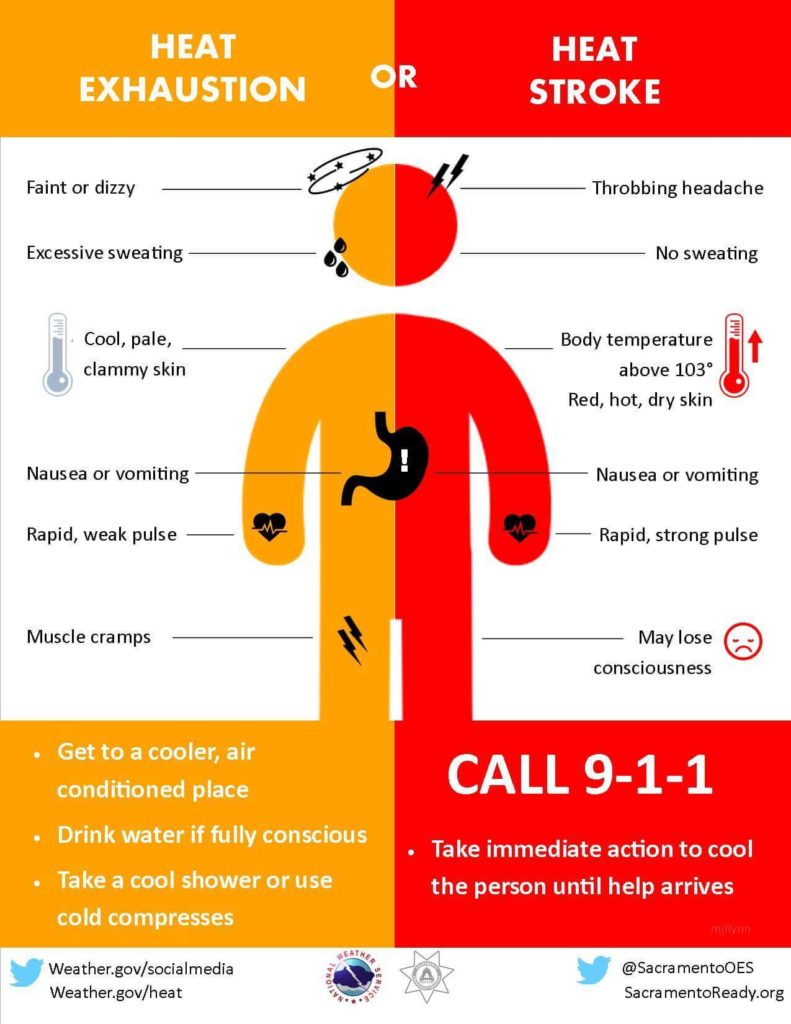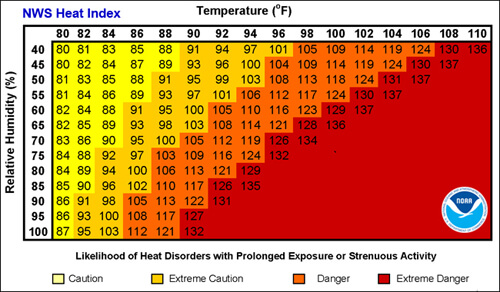Updated June 2024
The summer is a terrific time to exercise in the great outdoors – until it isn’t. Exercising in extreme heat can pose serious health risks. If you are biking, hiking, running or engaging in any strenuous outdoor activity, you need to be serious about taking precautions. Heat related illnesses can occur suddenly and have serious consequences. Get familiar with the signs and symptoms of of heat exhaustion and heat stroke in the following infographic, along with what actions you should take should you or a companion experience any. Learn more about the warning symptoms of heat illness and what to do for yourself or others at the Centers for Disease Control (CDC).

The National Weather Service has a handy color-coded chart that depicts temperatures from those requiring caution to those posing extreme danger.

The CDC offers the following prevention tips for athletes:
- Limit outdoor activity, especially midday when the sun is hottest
- Wear and reapply sunscreen as indicated on the package
- Schedule workouts and practices earlier or later in the day when the temperature is cooler
- Pace activity. Start activities slow and pick up the pace gradually
- Drink more water than usual and don’t wait until you’re thirsty to drink more
- Muscle cramping may be an early sign of heat-related illness
- Monitor a teammate’s condition, and have someone do the same for you
- Wear loose, lightweight, light-colored clothing
- Seek medical care immediately if you or a teammate has symptoms of heat-related illness
Of course, heat-related illnesses aren’t just a risk for people engaging in exercise. Children and the elderly and outdoor workers can also be at high risk. Here are some handy tools we’ve found useful.
Also, check out OSHA’s Heat Safety Tool App – especially hand for outdoor workers. Here’s a description:
The App allows workers and supervisors to calculate the heat index for their worksite, and, based on the heat index, displays a risk level to outdoor workers. Then, with a simple “click,” you can get reminders about the protective measures that should be taken at that risk level to protect workers from heat-related illness-reminders about drinking enough fluids, scheduling rest breaks, planning for and knowing what to do in an emergency, adjusting work operations, gradually building up the workload for new workers, training on heat illness signs and symptoms, and monitoring each other for signs and symptoms of heat-related illness.
